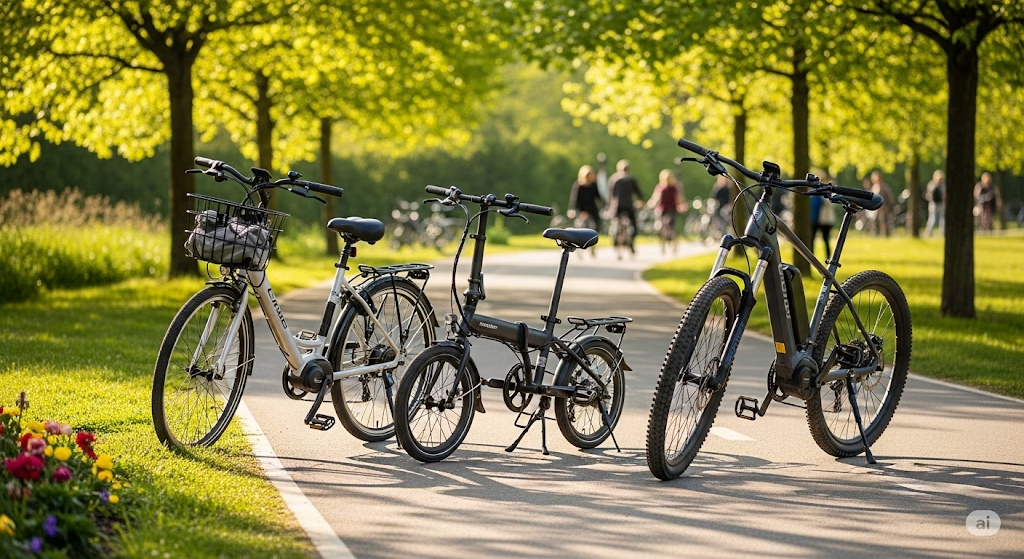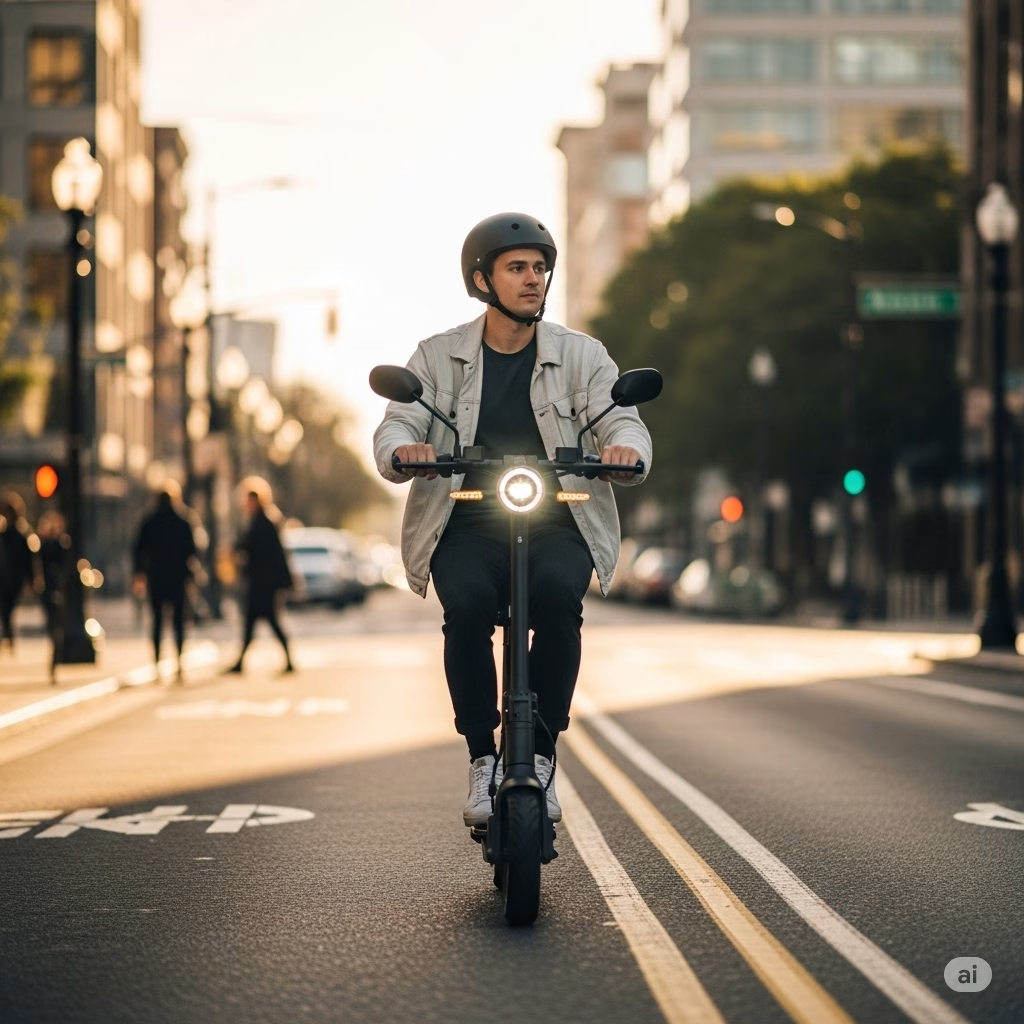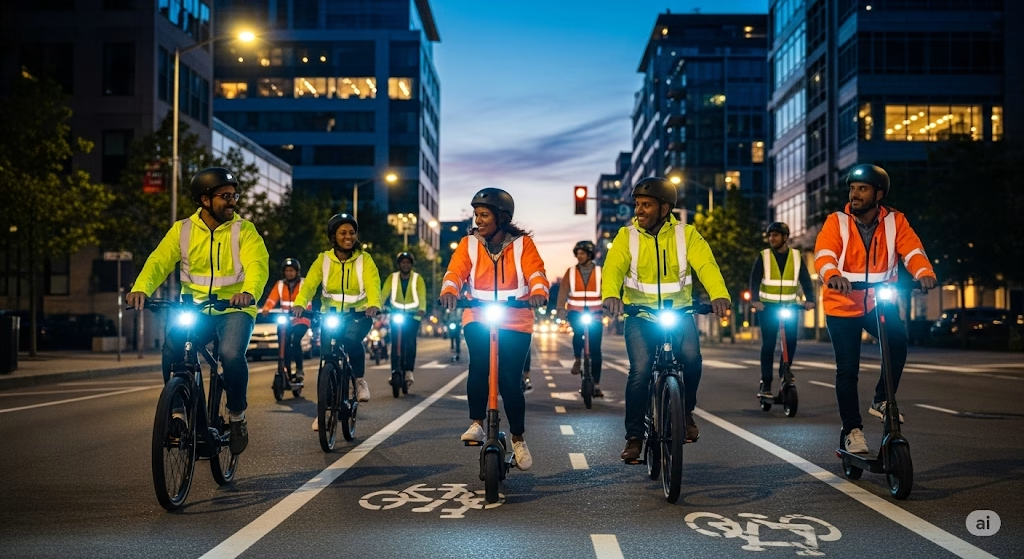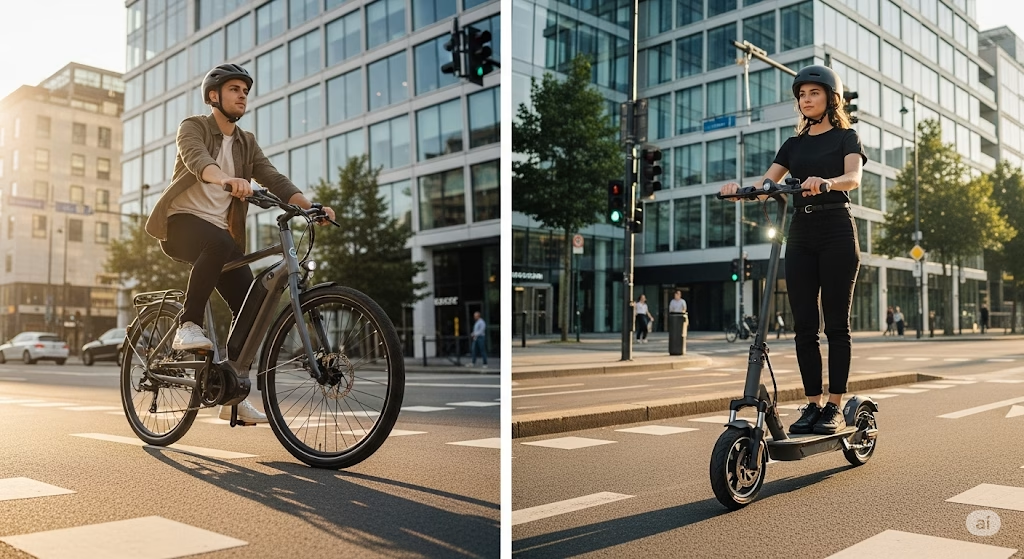The hum of an electric motor is increasingly becoming the soundtrack of modern mobility. Electric bikes, or ebikes, are surging in popularity, offering a versatile and eco-friendly way to commute, explore, and stay active. But stepping into the world of ebikes can feel overwhelming for newcomers. With a plethora of models, motor types, and technical specifications, where do you even begin? This comprehensive guide will demystify the ebike landscape, providing you with everything a new buyer needs to know to make an informed decision and power up your ride.
Decoding E-Bike Classes and Regulations: Know the Rules of the Road
Before you even start browsing models, understanding ebike classes and their legal implications is crucial. While regulations vary widely by country and region, a common classification system helps define a bike’s capabilities and where it can legally be ridden.
- Class 1: These ebikes are pedal-assist only, meaning the motor provides power only when you’re actively pedaling. The motor’s assistance ceases once you reach 20 mph (32 km/h). In many locations, Class 1 ebikes are treated similarly to traditional bicycles, granting them access to bike paths and multi-use trails where regular bikes are permitted.
- Class 2: Class 2 ebikes also feature pedal-assist up to 20 mph (32 km/h), but they additionally come equipped with a throttle. This allows you to propel the bike forward without pedaling, offering a boost of power when needed. Similar to Class 1, they are generally allowed on bike paths, but it’s always wise to check local regulations, as some areas might have specific restrictions.
- Class 3: These are pedal-assist only ebikes with a higher top assisted speed of 28 mph (45 km/h). Designed for faster commuting and covering longer distances, Class 3 ebikes often have more robust components. However, their higher speed limit often comes with stricter regulations. In many places, riders must be at least a certain age, and they might be restricted to roads and bike lanes, often prohibited from shared-use paths frequented by pedestrians and slower cyclists.
Key Takeaway: Understanding these classifications will not only help you choose a bike that fits your riding style but also ensure you comply with local laws, avoiding potential fines or restrictions. Always check your local ordinances regarding ebike usage.
Motor and Battery 101: Powering Your Pedal Strokes
The motor and battery are the heart of your ebike, dictating its power, range, and overall performance. Here’s a breakdown of the essentials:
Motor Types: Hub Drive vs. Mid-Drive
- Hub-Drive Motors: These motors are integrated into the hub of either the front or rear wheel. They are generally more affordable and simpler in design, requiring less maintenance. Hub motors provide a direct push to the wheel, which can feel like being propelled forward. They are a common choice for budget-friendly ebikes and those primarily used on relatively flat terrain. However, they can sometimes feel less balanced, especially with a rear hub motor, and they don’t leverage the bike’s gears, potentially making hill climbs less efficient.
- Mid-Drive Motors: Positioned at the bike’s bottom bracket (where the pedals connect), mid-drive motors transfer power directly to the drivetrain, utilizing the bike’s gears. This results in a more natural riding feel, improved balance, and significantly better performance on inclines. Mid-drive motors are more efficient, allowing you to maximize battery range, especially on hilly routes. While typically found on higher-end models, their superior performance makes them a worthwhile investment for riders in areas with varied terrain or those planning on tackling more challenging rides.
Wattage: Measuring Motor Power
Motor power is typically measured in watts (W). Common ebike motor wattages range from 250W to 750W. A higher wattage generally translates to more power and better acceleration, especially when starting from a standstill or climbing hills. However, keep in mind that higher wattage can also impact battery range. For general commuting and recreational riding on relatively flat terrain, a 250W to 500W motor often suffices. If you anticipate frequent hill climbs or carrying heavy loads, a more powerful motor might be more suitable.
Battery Capacity: Extending Your Adventure
Battery capacity is measured in Watt-hours (Wh). This figure indicates the amount of energy the battery can store and directly influences the ebike’s range – how far you can ride on a single charge. A higher Wh rating means a longer potential range. Battery capacities in ebikes can range from around 250 Wh to over 700 Wh. Your ideal battery capacity will depend on your typical riding distances and terrain. For short commutes and errands, a smaller battery might be sufficient. However, if you plan on longer recreational rides or tackling hilly terrain, investing in a bike with a higher Wh battery will minimize range anxiety. Factors like rider weight, terrain, and level of pedal assist used will also affect the actual range achieved.
Key Takeaway: Consider your typical riding needs and terrain when evaluating motor type, wattage, and battery capacity. A balanced approach will ensure you have enough power and range without unnecessary weight or cost.
Key Components to Look For: Beyond the Motor and Battery
While the motor and battery are crucial, other components significantly impact your ebike’s ride quality, safety, and longevity:
- Frame Material: Ebike frames are commonly made from aluminum alloy or steel. Aluminum frames are lighter and rust-resistant, offering a more agile feel. Steel frames, while heavier, are known for their durability and comfortable ride quality, often absorbing road vibrations better. Carbon fiber frames are also found on high-end models, offering the best combination of lightness and stiffness but come with a premium price tag.
- Brakes: Hydraulic vs. Mechanical Disc Brakes: Ebike riders often travel at higher speeds and carry more weight than traditional cyclists, making reliable brakes paramount.
- Mechanical Disc Brakes: These use cables to actuate the brake calipers. They are more affordable and easier to maintain. However, they require more hand force and might not offer the same level of stopping power or modulation as hydraulic brakes.
- Hydraulic Disc Brakes: Utilizing fluid-filled lines, hydraulic brakes offer superior stopping power, better modulation (allowing for more precise control), and require less hand effort. They are generally more reliable in wet conditions and provide a more confident braking experience. While they might be slightly more expensive and require more specialized maintenance, hydraulic disc brakes are a significant upgrade for safety and performance, especially on heavier or faster ebikes.
- Suspension: Suspension systems absorb bumps and vibrations, enhancing ride comfort and control, particularly on uneven surfaces.
- Front Suspension (Hardtail): Common on many commuter and recreational ebikes, front suspension forks absorb shocks from the front wheel, improving comfort and handling on rough roads or light trails.
- Full Suspension: Featuring suspension on both the front and rear wheels, full-suspension ebikes offer maximum comfort and control on challenging terrain. Typically found on eMTBs, they are designed to handle significant bumps and drops.
- Rigid (No Suspension): Some ebikes, particularly city commuters designed for smooth pavement, come without suspension. This reduces weight and maintenance but can result in a less comfortable ride on rough surfaces.
- Gears and Drivetrain: A good quality gear system allows you to pedal efficiently across various terrains and assist the motor effectively. Look for reputable brands like Shimano or SRAM. The number of gears will influence the range of pedaling resistance available.
- Tires: Consider the type of riding you’ll be doing. Thinner, smoother tires are more efficient on paved surfaces, while wider, knobbier tires offer better grip on off-road trails. Some tires also come with puncture protection.
- Lights and Fenders: If you plan on commuting or riding in low-light conditions or during wet weather, integrated lights and fenders are essential for safety and comfort.
- Display and Controls: Most ebikes feature a handlebar-mounted display that shows information like speed, distance, battery level, and assist level. User-friendly controls for adjusting assist levels are also important.
Key Takeaway: Don’t solely focus on the electric components. Pay close attention to the quality and suitability of the mechanical components, as they significantly contribute to your overall riding experience and safety.
Price and Value: Understanding E-Bike Investment
Ebikes represent a significant investment, and understanding what to expect at different price points is crucial for maximizing value:
- Budget-Friendly (Under $1,500): At this price point, you’ll typically find ebikes with hub motors, basic battery capacities (around 250-400 Wh), and mechanical disc brakes. Frame materials are usually aluminum or steel, and suspension, if present, is often a basic front fork. These bikes are suitable for short commutes on relatively flat terrain and leisurely recreational rides.
- Mid-Range ($1,500 – $3,000): This segment offers a significant step up in quality and performance. You’ll find more models with mid-drive motors, larger battery capacities (400-600 Wh), and hydraulic disc brakes. Frame materials are often higher-quality aluminum alloys, and front suspension forks will be more refined. These ebikes are well-suited for longer commutes, tackling moderate hills, and more adventurous recreational riding.
- High-End ($3,000+): At the top end of the spectrum, you’ll encounter ebikes with premium mid-drive motors (often from Bosch, Shimano, or Brose), large battery capacities (600 Wh and above), high-quality hydraulic disc brakes, and advanced suspension systems (including full suspension on eMTBs). Frame materials might include lighter and stiffer alloys or even carbon fiber. Components like gears and tires will also be of higher quality, offering superior performance and durability. These ebikes are designed for serious enthusiasts, long-distance riders, and those tackling challenging terrain.
Value Considerations: When assessing value, don’t just look at the initial price. Consider the quality of the components, the reputation of the brand, the battery capacity and expected range, the type of motor, and the warranty offered. A slightly more expensive ebike with better quality components and a longer lifespan might offer better long-term value than a cheaper model that requires frequent repairs or has limited performance. Reading reviews from reputable sources and other owners can provide valuable insights into the real-world value and reliability of different ebike models.
Key Takeaway: Determine your budget realistically and understand what features and performance levels are typically offered within that range. Research different brands and models, and prioritize components that align with your specific riding needs.
Power Up Your Choice
Choosing the right ebike is a personal journey. By understanding the different classes, motor and battery technology, key components, and price points, you’re now equipped with the knowledge to navigate the ebike market with confidence. Consider your riding style, typical routes, and budget, and don’t hesitate to visit local bike shops for test rides and expert advice. With the right ebike, you’re not just buying a mode of transportation; you’re investing in a healthier, more sustainable, and undeniably fun way to experience your world. So, take your time, do your research, and get ready to power up your ride!






Leave a Reply